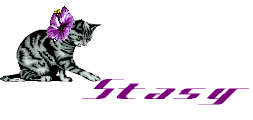


FRED FRITH: Live in Japan (CD on Fred Records)
Originally released as a long out-of-print limited edition double album on vinyl in 1981, this CD reissue in 2010 offers 70 minutes of improvised music recorded live on Frith's solo tour of Japan in 1981 at: Nichifutsu Kaikan, Tokyo on July 11, Mainichi Kokusai Salon, Osaka on July 17, 80s Factory, Fukuoka on July 20, and Kawai Hall, Maebashi on July 22.
Frith plays 1961 Burns Black Bison guitar, custom double-neck guitar, pilot's throat microphone from WWII, HH electronic Stereo Mixer amp with HH Digital Effects Unit, piano (in Maebashi only), and violin.
Since leaving Henry Cow and embarking on his solo career, Frith has become renowned for his guitar experimentation, and this recording excellently shows why he gained that reputation. Abstract sounds and seemingly chaotic noodling coalesce to form engaging pastiches of sound that stimulate the outre glands in us all. He mixes strummed guitar and nervously plucked and scraped strings with tense treatments, resulting in staccato structures that flow into controlled turmoil. These expressions mutate into a roiling morass of agitated sounds that cascade with edgy creativity, pushing the envelope and setting the bar for experimentalists for decades.
Gabbled voice and sundry effects lend auxiliary weirdness to the trembling soundscape. Frith frequently uses the body of his guitar as a percussive instrument, added erratic beats to the streaming tension.
Despite its improvised nature, much of this music exhibits a studied flow as Frith explores novel avenues of discordance, generating an aural panorama of twitchy disposition. It is a primal form of ilbience, only using a guitar instead of computerized effects to achieve that edgy temperament.

THE TIPTONS SAXOPHONE QUARTET: Strange Flower (CD on Zipa/Spoot Music)
This release from 2010 offers 58 minutes of modern jazz music.
The Quartet consists of: Amy Denio (on alto sax, clarinet, and voice), Jessica Lurie (on alto and tenor sax, and voice), Sue Orfield (on tenor sax, and voice), Tina Richerson (on baritone sax, and voice), and Chris Stromquist (on drums and sounds).
A host of saxophones are given a boost by stalwart percussion.
Instead of each saxophone blaring away simultaneously, each performer takes a turn with the lead melody while auxiliary horns supply bouncy embellishments. The horns rarely employ bluster in their expressions, preferring to relegate their enthusiasm to agile maneuvers from chord to chord. Short bursts are as prevalent as slippery phrasing, generating a lush auralscape that shines with balance.
The drumming is quite capable and snappy, but restrains itself to a role of subtle locomotion so as not to overwhelm the music. The rhythms fit nicely in-between the sax notes.
One track features non-lyrical voices that inject a human element into the cerebral milieu. Actual lyrical vocals appear in the title track. The application of clarinet also provides a tasty alternative breeziness to the brass.
These compositions combine aspects of jazz and swing to achieve a cafe recital flair that is drenched in modern appeal but maintains a very traditional charm. The tunes are sprightly and quite energetic, displaying a decided sense of joviality. Despite that inherent mirth, the tunes possess a serious afterburn.

UNIVERS ZERO: Heresie (CD on Cuneiform Records)
Originally released in 1979, this CD reissue from 2010 offers 63 minutes of dark chamber music (12 of them constituting a previously unreleased track).
Univers Zero is: Michel Berckmans (on oboe and bassoon), Daniel Denis (on drums and percussion), Patrick Hanappier (on violin and viola), Guy Segers (on bass and voice), and Roger Trigaux (on guitar, piano, organ, and harmonium). For the bonus track, Vincent Motoulle (on keyboards) replaces Berckmans' presence.
The first track ("La Faulx") begins with a passage of low horns and woodwinds punctuated by harshly raspy vocals. Drums enter the mix, establishing an element of discordant agitation with hesitant beats that mount in strength and rhythm until everything erupts into a cacophony of ominous character. The emergence of the dire strains of violin enhances the edgy melodrama. The bassoon's mournful resonance introduces a touch of optimistic hope to the darkness with agile notes that cavort amid the gathering gloom. By now the drums have adopted concrete rhythms, albeit often eccentric, providing a tense locomotion to things. The intensity consistently increases to a moody crescendo.
The second piece ("Jack the Ripper") continues this moody darkness with ominous violin and somber bassoon. Each instrument contributes to this overall gloom, with the drums generating emphatic beats and the bass providing a subterranean rumble and the organ establishing a glutinous drone that slithers beneath everything like a stygian foundation. It is the violin and bassoon, though, that provide the lead riffs of this desperate melody.
Next there's "Vous le Saurez en Temps Voulu," which tempers the gloom with sprightly elements that do not alleviate the tension but actually bestow an energetic flair to the spectral edginess.
The CD concludes with "Chaos Hermetique," the bonus track, in which guitar plays a more prominent role, contributing anguished bleats to the roiling murkiness achieved by the other instruments. Ah, but the violin swiftly slides in to usurp the high end, generating a delightful anxiety.
These compositions mark an historic point that what would evolve into the Rock in Opposition movement in Europe, where dedication to musical purity supplanted any concern for popular accessibility. The music is spooky and desperate, more classical than rock.
The CD includes a 16 page booklet with tasty archival photos and an in-depth account of the band's early days and their musical evolution.

| Entire page © 2011 Matt Howarth. All rights reserved. |
Webpage design by
 |